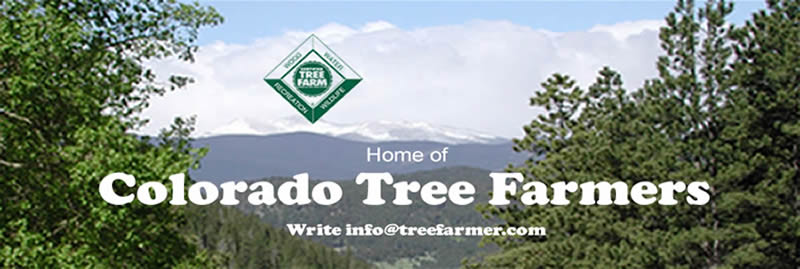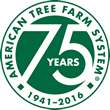| Be confident that what you do in your forest will improve it's health and sustainability for future generations. Become a Tree Farmer! |
|||
| Tree Farmer Alert | |||
| Tuesday, February 26, 2019 Over 800 readers and growing! |
|||
Tax Tips for Forest Landownerscontributed by
|
|||
In case this might be helpful, and you haven't seen it. (attached) |
|||
2018 aerial forest health survey for Coloradocontributed by
|
|||
Attached and below is a news release announcing the results of the 2018 aerial forest health survey for Colorado. Every year, the Colorado State Forest Service and U.S. Forest Service, Rocky Mountain Region, work together to aerially monitor forest health conditions on millions of forested acres across the state. The 2018 survey indicates that bark beetle outbreaks have continued to expand in parts of Colorado. Notable impacts include: · Approximately 178,000 acres of high-elevation Engelmann spruce were affected by spruce beetles in 2018. Primary areas impacted include forestlands in and around Rocky Mountain National Park, and portions of the San Juan Mountains, West Elk Mountains and Sawatch Range. · Since the year 2000, spruce beetle outbreaks have caused tree mortality on more than 1.8 million acres in Colorado, and approximately 40 percent of the spruce-fir forests in the state have now been affected. · Roundheaded pine beetle, along with associated native bark beetles, has continued to increasingly affect ponderosa pine forests in southwest Colorado. Over the past several years, populations of this insect have risen exponentially, with 27,000 acres impacted in 2018, compared to 11,000 acres in 2017. Record-warm temperatures and record-low precipitation have provided an environmental window that may continue to favor increasing beetle populations. Images are available upon request. Please contact me with any questions or interview/image requests. Thanks, Ryan
|
|||
How to Read a Topographic Mapcontributed by
|
|||
Here’s something for the next ‘Tree Farm Alert”: “All tree farmers and forest ag landowners have a forest management plan. There is a topographic map within that plan. Here is a guide on how to read that map.”
|
|||
Extreme cold may wipe out high percentage emerald ash borer larvaecontributed by
|
|||
The extreme temperatures moving in with Sunday’s arctic blast may kill off a significant percentage of emerald ash borer larvae, according to one of the premier forestry experts in Minnesota.
|
|||
Forest and Water on a Changing Planetcontributed by
|
|||
Water security is key to achieving the United Nations' Sustainable Development Goals (SDGs). Yet, increasingly the world is facing water shortages, and an estimated four billion people do not have sufficient access to safe and reliable water. The link between forests and climate is regularly considered in decision-making, whereas that between forests and water remains under-represented.
|
|||
Replacing sand, salt with wood chipscontributed by
|
|||
The City of Saskatoon is testing out an environmentally friendly way to make roads less slick this winter. Inspired by cities in Switzerland and Quebec, city workers will be using wood chips on icy roads in the North Industrial Area rather than sand and salt.
|
|||
|
|||
Reducing forest fire risks requires market incentives, free enterprisecontributed by |
|||
In a rare example of bipartisanship, last week the Democratic-controlled House of Representatives passed two Republican-sponsored bills to increase funding for fire-reduction projects in federal, state and private forests. Although there is heated disagreement over the causes of the recent increase in catastrophic wildfires — is it climate change, federal mismanagement or both? — there is clear consensus on the need to reduce fire risks now, even as we continue to debate long-term solutions.
|
|||
“Improving
|
|||
The Colorado Forest Health Advisory Council (FHAC) developed and published “Improving
|
|||
If this email was helpful,
|
|||



 the road, behind the green and white Tree Farm signs and we care about what's happening in our forests.
the road, behind the green and white Tree Farm signs and we care about what's happening in our forests.